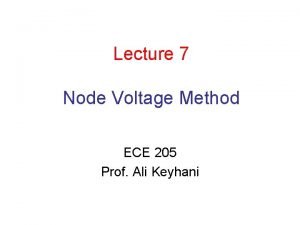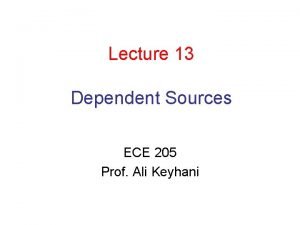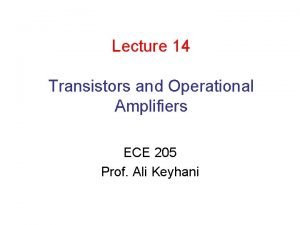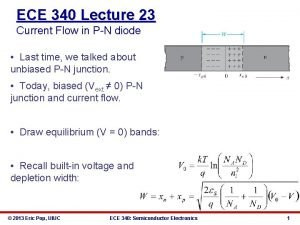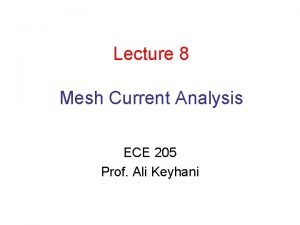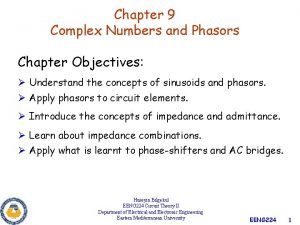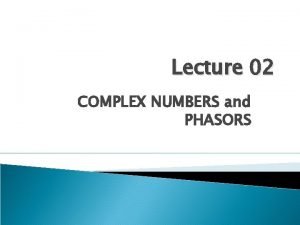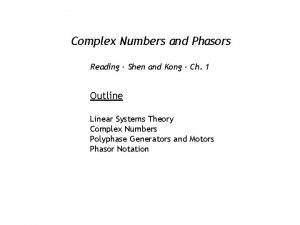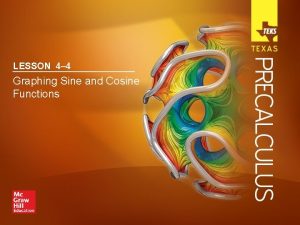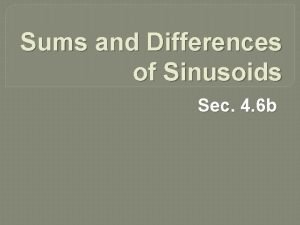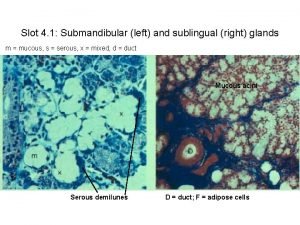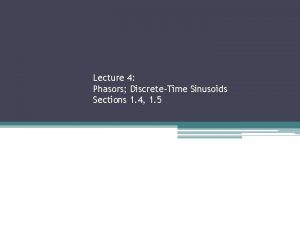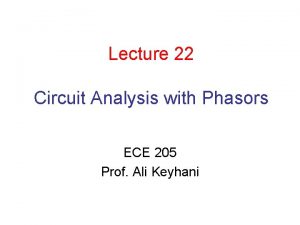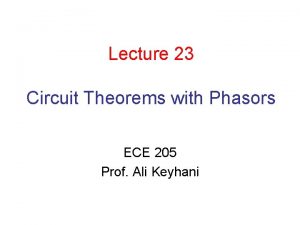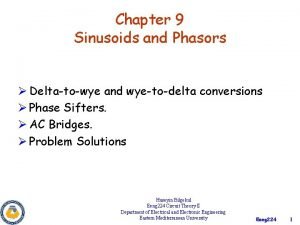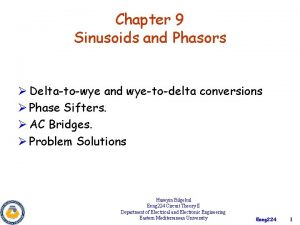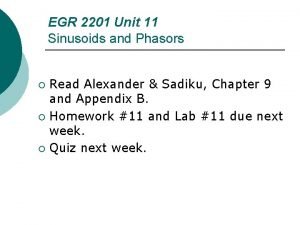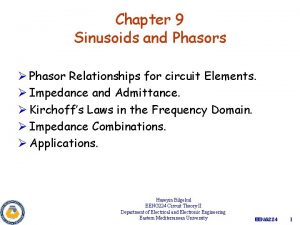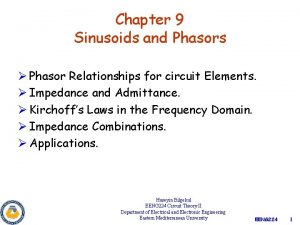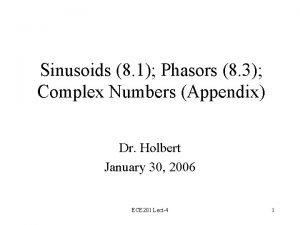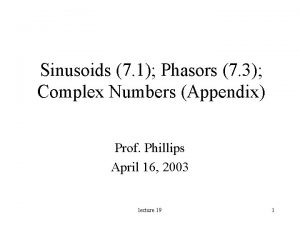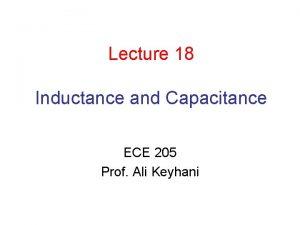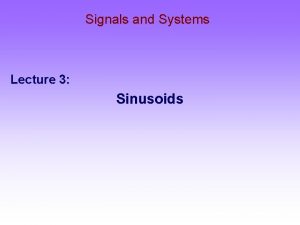Lecture 21 Sinusoids and Phasors ECE 205 Prof
















- Slides: 16

Lecture 21 Sinusoids and Phasors ECE 205 Prof. Ali Keyhani

Phasors • Phasor is a complex number representing the amplitude and phase angle of a sinusoid • Euler’s relationship: • Euler’s relationship applied to general sinusoid:

Phasors • Phasor representation of sinusoid v(t): Phasor Diagram

Phasors Complex exponential (rotating phasor):

Phasor Properties Additive Property: Note: This result applies only if sinusoids have the same frequency

Phasor Properties Derivative Property: Note: Differentiating a sinusoid changes the amplitude by a factor ω and shifts the phase angle by 90°.

Example 1 • Construct the phasors representing the following signals: • By using the additive property find the sum of the waveforms

Example 1 Solution:

Phasor Diagram

Complex Numbers A complex number is a quantity in the form of i b Where a and b are real numbers, and 0 a: real part b: imaginary part is called the conjugate of z a r

Complex Numbers A complex number can also be written in phasor form: where Magnitude (or norm) - Angle (or phase)

Complex Numbers Conversion between two forms: i b 0 a r

Complex Numbers Operation Addition / Subtraction:

Complex Numbers Operation Multiplication: A complex number times its conjugate the square of its magnitude

Complex Numbers Operation Division: Addition and subtraction can be easily done in regular form. While multiplication and division are a little bit complicated.

Complex Numbers Operation Multiplication: (13) Division: (14) Multiplication and division are much easier to be done in phasor form.
